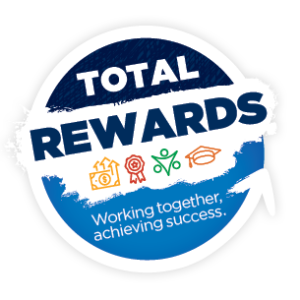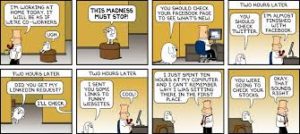Tracy Long | September 8, 2021
By Tracy Emmerich and Tracy Long
Finding and retaining top talent is a core strategy of all businesses. Without a top-notch team of people dedicated to delivering on the promises of the organization, the most well-conceived business plan is not sustainable. Total rewards are key to ensure you are rewarding and recognizing your talented team. At Leap Solutions, we support our clients in the development and implementation of their total rewards plan and systems. As you read the newsletter, consider how you recruit and retain your team, what is working, and what needs to be strengthened. Finally, consider what your best would look like when you have all the top talent you need delivering on your promises.
In this issue of our newsletter:
- Recruitment and Retention
- Total Rewards Defined
- Total Rewards Strategy
- The Changing Workforce
- Pay Equity
- Compensation Analysis

Recruitment and Retention
The signs are everywhere – HELP WANTED… Now Hiring!…Hiring Bonus!
Labor shortages caused by instability in sectors like leisure and hospitality are compelling people to seek different career opportunities. Parents (mainly women) laid off and caring for their children have either not returned to the job market or are finding alternatives that provide a better work/life balance. And there’s the trending concern about the “great resignation,” predicted to create a Turnover Tsunami (HR Magazine, Summer 2021, Society for Human Resources Management) of employees who wanted to protect their income during COVID and are now burned out, dissatisfied with their employers’ return-to-office policies, and/or are just looking for better opportunities.
Employers are struggling to find, motivate and retain top talent. So, what is the key to recruiting and retaining employees? Assessment of your recruitment and retention issues — effective onboarding, meaningful work and relationships, and well-trained supervisors — are musts, and as is evaluating your organization’s total rewards strategy.

Total Rewards Defined
Total rewards are a combination of direct and indirect compensation.
Direct compensation includes base wages of hourly pay, salary, or piece rate; differential pay (for example shift pay); commissions; bonuses; and incentive pay.
Indirect compensation includes health and welfare benefits, medical, dental, vision, short- and long-term disability; retirement and other long-term benefits like 401(K) match, SEP IRAs contributions, HSA contributions, profit sharing, and stock options; paid leave such as vacation, PTO, sick, holidays, and bereavement; and perquisites (perks) like employee discounts, training and development opportunities, social or gym memberships, childcare assistance, pet insurance, recognition programs, flex-work, casual Friday, and more.

Total Rewards Strategy
Developing a total rewards strategy requires knowledge of employee motivations and desires. For example, twenty-nine percent of employees say that their mental/emotional health has deteriorated as a result of the pandemic (Willis Towers Watson Survey 2020 Global Benefits Attitudes Survey). This is a significant number that can even be higher for essential workers and not something that many have paid attention to in the past.
Additionally, your strategy needs to be in alignment with the company’s goals. What is your value proposition? Are you the low-cost leader or are you pioneering innovative products or services? In what phase of the life cycle is your organization? Are you a start-up that places value on basic benefits and wages, but emphasizes high incentives, or are you a mature business that values expanded benefits including perks and bonuses? Your answers help you decide to lead, match, or lag the market in pay and benefits.

The Changing Workforce
Selecting the ‘rewards’ of total rewards should be reflective of:
- your company’s values
- the nature of work (in office or work from home)
- employees’ changing expectations regarding pay transparency, stability, well-being, and flexibility
- employee demographics and the employee behaviors that you are trying to encourage
Don’t assume one size fits all. Rewards should span the employee life cycle, from accommodating single employees just entering the job market, to mid-career with families, to those nearing retirement.
Total rewards are not just for full-time employees anymore. Employers embracing part-time employees will find a larger pool of potential employees who can be more committed than their full-time counterparts.

Pay Equity
Many companies are realizing that pay equity issues are built into existing systems and require concerted efforts to eliminate inequities. California, Oregon, and Washington are among several states that have banned employers from asking job applicants about their salary history; questions which can reinforce and perpetuate pay inequality. Inequities can be identified through annual reviews of wages.
Work from home has created its own pay equity issues. Employers have primarily based pay on the location of the employee. For example, if you have lived in a lower cost of living area, you have typically been paid a lower wage based on that area, and vice versa. Employers allowing their workforce to work from anywhere must decide pay based on location (where the employee lives or where their home office is located), pay based on the type of position and level of qualification, or a combination of the two. Complicating the location issue is nomadic employees who may work in multiple locations throughout the year while companies allow employees to work remotely.

Compensation Analysis
A good rewards strategy ensures that you have relevant, up-to-date market information to make compensation decisions. To remain competitive, semi-annual or quarterly reviews should now supplement annual wage reviews. Hard-to-fill positions or Hot Jobs may require more frequent analysis. Even if your overall strategy is to match the market, you may want a separate strategy to lead the market for certain positions that require you to be more competitive.

Leap Solutions Group Can Help
Developing a total rewards strategy is a thoughtful, deep dive process that requires understanding your business, your reward philosophy, employee needs (now and in the future), and the changing environment. Recruiting and retaining talent remain a challenge for the foreseeable future. The cost is too high not to have a well-thought-out strategy that positions you as an employer of choice. Leap Solutions Group is here to help you evaluate and develop your total rewards philosophy, assess your current compensation and benefit offerings, and create solutions for a thriving workforce.
Give us a call so you can take that help wanted sign out of your window!

***
Leap Solutions is a diverse group of highly skilled management, organizational development, and human resources, and executive search and recruitment professionals who have spent decades doing what we feel passionate about helping you feel passionate about what you do. Our HR specialists can help you get a handle on the ever-changing COVID-19 guidelines, programs, and legislation that may impact you and your employees. We are available to work with you to develop practical solutions and smart planning decisions for your organization’s immediate, near, and long-term needs.
To print this article, click here


Scott Ormerod | March 31, 2020

The COVID-19 pandemic and ensuing shelter-in-place orders have thrown countless individuals into unplanned work-from-home situations. Like many of our clients, you are probably feeling challenged and overwhelmed as you attempt to navigate a new norm for your families and your work.

A Full House
In the past, you may have fantasized about working from home, imagining yourself rolling out of bed to a freshly brewed pot of coffee, padding down the hall to a comfy home office and enjoying a peaceful, blissfully productive workday.
Then came the reality of pandemic-induced working from home: 24/7 togetherness with your partner, tireless young kids and/or cranky teens and pets; homeschooling demands; lagging wi-fi; constant disruptions and temptations; and a seemingly endless cycle of alarming news.
It’s time for a plan! Leap Solutions has put together some strategies for tackling this big shift in the way you live and work.
At-Home Negotiations
Start with setting up your home office and establishing household agreements.
- Workspace: Anyone working from home—including children doing schoolwork from home for the foreseeable future—needs a workspace that is practical and comfortable. Be it an unclaimed bedroom or just a thoughtfully planned corner of a family or living room, the area must be conducive to your working style (away from the television if you’re easily distracted, near the family’s common areas for easy supervision of kids, with a garden view if you prefer quiet inspiration…). Your space should have enough desk or table surface to hold your computer/laptop/Chromebook and papers/books; access to power, chargers and wi-fi; decent lighting; and an appropriate, uncluttered, neat background for video conferencing (perhaps somewhere you can sequester yourself from nosy, noisy pets!).
- Technology: If you haven’t already, set yourself up with video conferencing tools such as Zoom, Skype, Webex or Google Hangout. These, along with instant messaging and collaborative web-based applications, allow workers to be productive anywhere, anytime. Assuming you aren’t alone in the house, you might want to invest in a noise-canceling headset.
- Scheduling: You’ve probably heard some version of the phrase “you can do it all…just not all at the same time.” It’s especially true when you work from home. Experiment to find a schedule that works best for you, your working style, your projects and your family. Aim for at least one or two daily chunks of focused, uninterrupted work time per family member. Before a new week begins, discuss one another’s commitments and demands, and map out how to meet them all. Then, each evening, make a rough calendar for the following day: take into account what’s top of mind for each family member, include priorities and deadlines, engagement timelines, etc. Then negotiate: “How about I take the kids and dog for an early morning walk and make breakfast while you do those conference calls with the east coast? Then I can interact with my local team between 10:00 and 1:00 while you oversee the kids’ classwork and lunch?”
- Teamwork: Shared households require teamwork, but never moreso than when you’re all home all the time. Divvy up household obligations so no one family member feels overburdened. Think about meals and snacks (there’s a lot more work involved when three meals a day are prepared, served, consumed and cleaned-up-after on the premises!), food and supply shopping, cleaning and extended family obligations. With kids in the house, you’ll want to coordinate shifts monitoring screen time, helping with distance learning and schoolwork, guiding “after school” entertainment and exercise, and so much more.
- Sustainability: However you manage your days together, check in often and look after one another. With so little delineation between home and work, you may well find yourself working harder and longer hours than ever. You think you’ll just check your email after the kids go down, and before you know it you’re ringing in a new day. Don’t let sleep or emotional wellness suffer. Burnout doesn’t serve your family or your work.
- Grace: Though you’re likely to become a master multi-tasker during these shelter-in-place times, you can’t do it all—and shouldn’t be expected to. Be realistic about what’s possible (hint: there probably will be too much screen time, and there probably won’t be a perfectly tidy home!), be open to revisiting what isn’t working well, and, above all, extend yourself some grace.
- Downtime: Minimize inevitable stress with intentional, regular diversions. Buy yourself some downtime by setting the kids up with snacks and a movie. Binge a Netflix series with your partner. Give yourself and your families a periodic change of scenery with a walk or a short drive. But know that you don’t even have to leave your house to be transported: during COVID-19, authors are streaming read-alouds and musicians are streaming concerts from their living rooms; Broadway shows and opera houses around the world are presenting video performances; and museums are offering virtual walking tours. For activities, look to daily workout videos; follow-along STEM projects; and drawing, music and dance tutorials—all free and accessible anytime.
- Connection: Practicing good “social distancing,” doesn’t mean losing contact with friends and loved ones. Get creative! Embrace the same technologies you use at work to schedule regular get-togethers. Try a virtual happy hour with friends, a shared meal with extended family, or a recipe bake-off for the kids. Launch a Netflix Party to watch and chat about shows and movies together in real time. You may well feel more connected to friends and loved ones than ever before!

Work Communication
With everyone working remotely, it’s especially important to maintain that same connectedness with your team, colleagues and clients by implementing an intentional, proactive communication strategy.
- Tools: Make sure everyone you work with has access to the aforementioned technologies, and build in time and provide resources for learning them. Take advantage of project maps and online project management tools, such as Smartsheet or Zoho Projects, so everyone is always on the same page.
- Engagement: Demonstrate your ongoing commitment to your team and their wellbeing by keeping them abreast of any developments in company operations as well as any updates to government programs in support of them and their families. Schedule connection points with everyone at least once a week and daily check-ins for employees you directly manage.
- Flexibility: Establish clear guidelines and realistic expectations for how objectives will be met and essential duties will be fulfilled, but recognize that flexibility is key. Don’t expect everyone to be on a conventional 40-hour, nine-to-five workweek. Prevent misunderstandings and avoid resentments by being reasonable and honest about your availability and capabilities, and encourage the same from others as they, too, learn to manage their at-home workdays.
- Adaptability: These are unprecedented times. Know there will be glitches, situations can change rapidly, new issues will arise, and plenty of things will go differently than planned. Be ready to adapt, revisit agreements and adjust next steps and deadlines accordingly. Most importantly, impart confidence by maintaining transparency, open communication and respect throughout.
- Status quo: Even when there’s nothing to report, check in. Listen to how your employees are feeling and how they’re adjusting; ask what’s working well and what’s been challenging. Hear their anxieties and empathize with their struggles, and share your own experience, perspective and solutions.
- Inspiration: Focus on what matters now. Your humanity and compassion create a sense of caring and belonging among your team. Listen to one another and be inspired by one another’s thoughts, hopes and triumphs.
- Celebration: Provide positive feedback and express gratitude to your team members for their contributions and accomplishments during these trying times. Help them feel recognized, appreciated and valued.
A Balanced Life
Even in the midst of a worldwide crisis, Leap Solutions Group is here to support you, guide you and help you thrive, both professionally and personally. As you learn to successfully blend your work life and your home life in ways you never have before, you may just find yourself feeling more balanced than ever!

Click here to print this newsletter.









![]()






